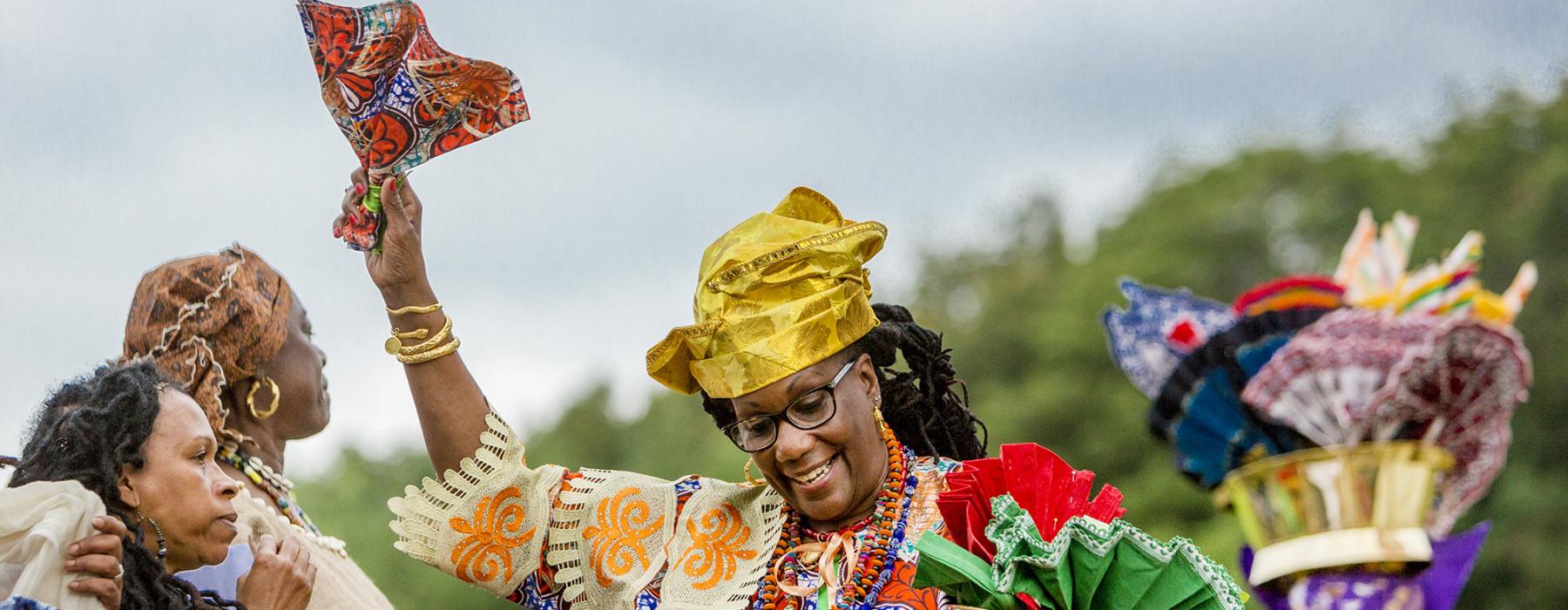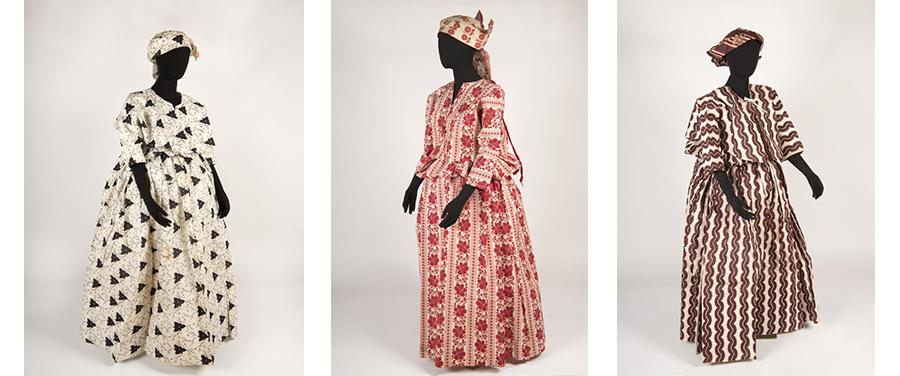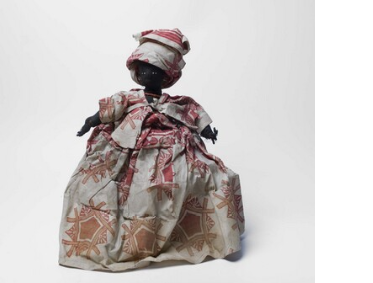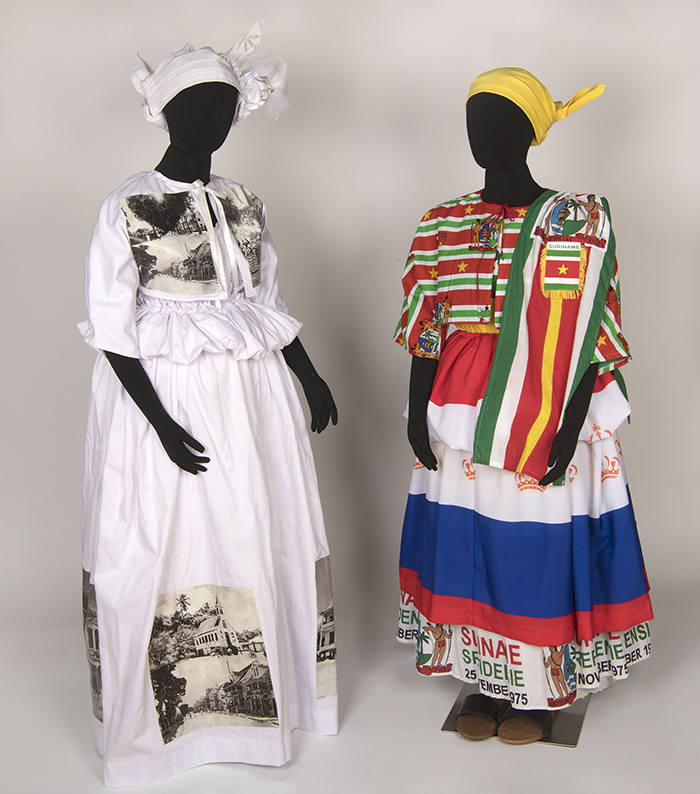
Everyone is familiar with the parade of Afro-Surinamese women wearing magnificent headscarves (angisa), voluminous skirts (koto) and wide, protruding jackets (yaki), who walk through Amsterdam on July 1st on their way to the Oosterpark. Every year the festival of Keti Koti (broken chains) is celebrated there, the abolition of slavery on that day in 1863. Afro-Surinamese women who wear a koto are called kotomisi. Misi means woman. The skirts stand out with starch but often because several skirts are also worn underneath. A koto should have lots of volume. Each item of clothing may have the same print (heristel/eristel) but may also be made from different fabrics. The Surinamese flag is a popular print.



